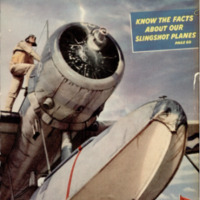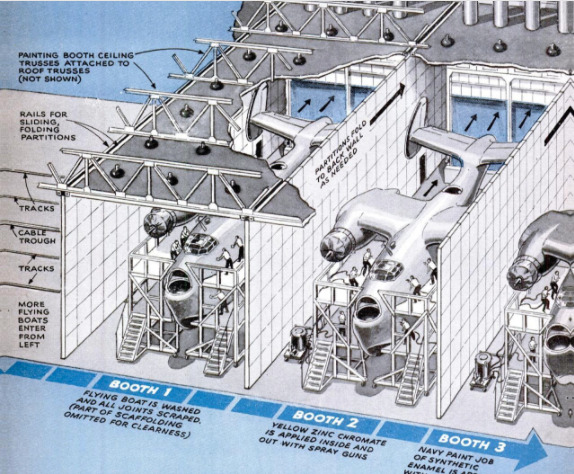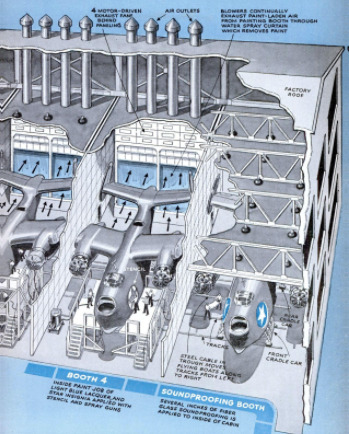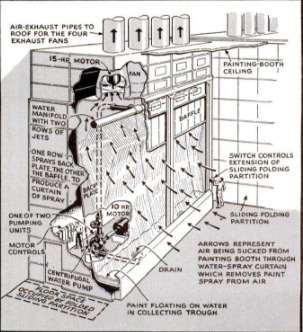Advanced systems for painting planes
Item
-
Title (Dublin Core)
-
Advanced systems for painting planes
-
Article Title and/or Image Caption (Dublin Core)
-
Title: Painting big planes
-
extracted text (Extract Text)
-
LARGE enough to accommodate the body
suructures, complete with wing stubs,
engines, and tail assembly, of five big Navy
patrol planes at once, a block-long shop in
the Glenn L. Martin plant helps speed air-
craft to the fighting fronts. As they move
through the building-within-a-building, fly-
ing boats receive three paint jobs and two
other finishing treatments in assembly-line
style.
Each operation, performed in a separate
booth, takes approximately the same time.
To assure this, men and women workers
may be shifted as needed from one booth to
another, When work in all booths is done,
out comes a finished plane body at the end
of the line.
Now the whole scene shifts. Partitions,
which have separated the booths, telescope
toward the rear like the panels of folding
household screens. This clears a pair of
railway tracks running lengthwise through
the building. Front and rear
cradles, supporting each fuse-
lage, rest on these tracks. Now,
a special tow car is made fast
between the cradles and is at-
tached to an endless cable. An
electric-powered winch draws
ahead the cable, tow car,
cradles, and plane body, until
each fuselage has been ad-
vanced to the next booth. The
same procedure brings a new-
ly assembled plane body, from
outside the building, past a
telescoped wall into Booth 1.
With wall and partitions back
in place, the production cycle
goeseon.
Accompanying drawings
show what happens in the
booths. The yellow zinc chro-
mate coat provides resistance
to corrosion. A finishing coat
of enamel, bluish slate above
and a lighter shade of bluish
gray beneath, makes the plane
difficult to detect against sea
or sky.
After the main part of the
plane leaves the booths, the
wing panels, which have been
painted in another part of the
plant, are attached, instru-
ments are checked, armament
is installed, and another PBM-
3 Mariner is ready for its test
flight.
To avoid fire hazards from
paint solvents, and to protect
the workmen by making the
air in the booths purer to
breathe, each of the compart-
ments is equipped with a cur-
tain of water through which
powerful fans constantly ex-
haust spray-laden vapors. Val-
uable pigments, instead of
disfiguring the surrounding
territory, are trapped in the
water sprays and recovered.
Although only Navy patrol
planes are being painted in the
shop, which is the largest of
its kind in the world, it could
handle any U.S. warplane ex-
cept the giant B-19.
-
Language (Dublin Core)
-
eng
-
Date Issued (Dublin Core)
-
1943-05
-
pages (Bibliographic Ontology)
-
94-96
-
Rights (Dublin Core)
-
Public Domain (Google Digitized)
-
Archived by (Dublin Core)
-
Matteo Ridolfi
-
Marco Bortolami (editor)
 Popular Science Monthly, v. 142, n. 5, 1943
Popular Science Monthly, v. 142, n. 5, 1943






